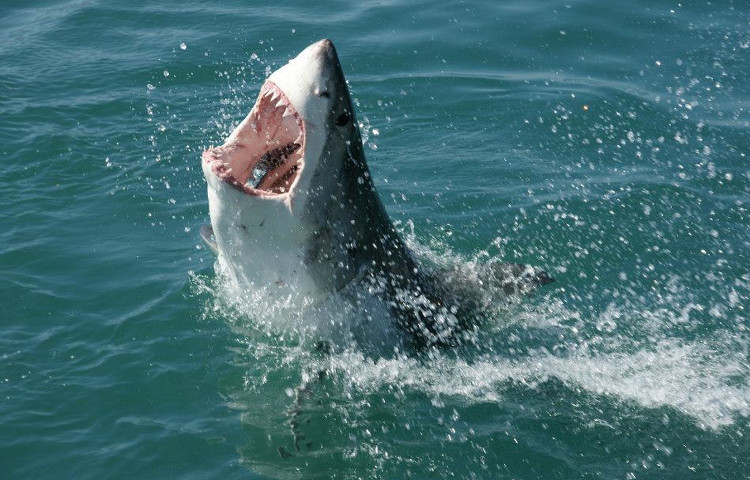Project of turning the US Navy torpedo shark live
The US Navy conducted secret tests on sharks to turn them into self-exploding torpedoes when swimming near the target.
According to the International Business Times, after World War II, the US Navy intends to mount bombs on shark bodies to detonate them remotely when needed. This secret project was discovered by the writer Mary Roach while studying sharks for a book expected to be published in September.
Roach did not find many documents about the project due to confidential information from the US government. However, through Michael Morisy, founder of the MuckRock website that specializes in the search for notes, Roach obtained the final report on the Headgear project . According to the report, this is a secret project that lasted from 1958 to 1971, bringing together biologists and weapons experts to turn sharks into "live torpedoes" that could explode when approaching. enemy ship.

The project turned shark into a complete US Navy suicide bomb weapon.(Artwork: Travelbag).
In an article published by Massachusetts Institute of Technology Undark on August 11, Roach said the explosives were tied to sharks. They also carry a compass device on their heads and shoulder electrodes, allowing contact with the control group at the battleship.
Since scientists have not found a way to control remote sharks at that time, the head device was programmed to track the animal. If the shark swims in the opposite direction, the electrode on one side of the shoulder will discharge 5 to 25 volts of electricity, forcing it to swim toward the target.
The co-author Perry W Gilbert, shark expert and former director of the Mote Marine Laboratory, and marine engineer James Marion, said the US Navy chose sharks instead of dolphins by the dolphins too. smart and difficult to obey orders.
According to the report, the experiments took place with sharks conducted during the period 1958 - 1967. Although electric shocks were initially effective, later tests in the pool gave disappointing results. because sharks do not obey the commander's commands.
If the electrical signal reaches the shark too weak, it will ignore it. But if the signal is too strong, the shark begins to move chaotic and does not change the direction of swimming as required. Finally, no shark will swim next to the target for longer than half an hour or 3/4 knots. Another study showed that sharks are not suitable for carrying heavy objects and the project was declared a failure.
- How serious is the 'double' torpedo duo of the Vietnamese Navy?
- Video: The US Navy develops robots to spy like sharks
- USS-Virginia - American steel fist in the ocean
- Sharks can live for more than 70 years
- 5 dishes millions of people like but are deadly, especially the number 3
- 'Shark cafe' in the middle of the Pacific Ocean
- Big sharks eat small sharks
- Learn about the power of Vietnam's stealth Sigma 9814
- The first shark in history to know ... vegetarian but still healthy
- Discovered 1,000 creatures living in whale sharks in Japan
- Look for methods to conserve energy through shark research
- The horrific explosion of sharks killed two Britons in 1956
 Surprised: Fish that live in the dark ocean still see colors
Surprised: Fish that live in the dark ocean still see colors Japan suddenly caught the creature that caused the earthquake in the legend
Japan suddenly caught the creature that caused the earthquake in the legend A series of gray whale carcasses washed ashore on California's coast
A series of gray whale carcasses washed ashore on California's coast Compare the size of shark species in the world
Compare the size of shark species in the world